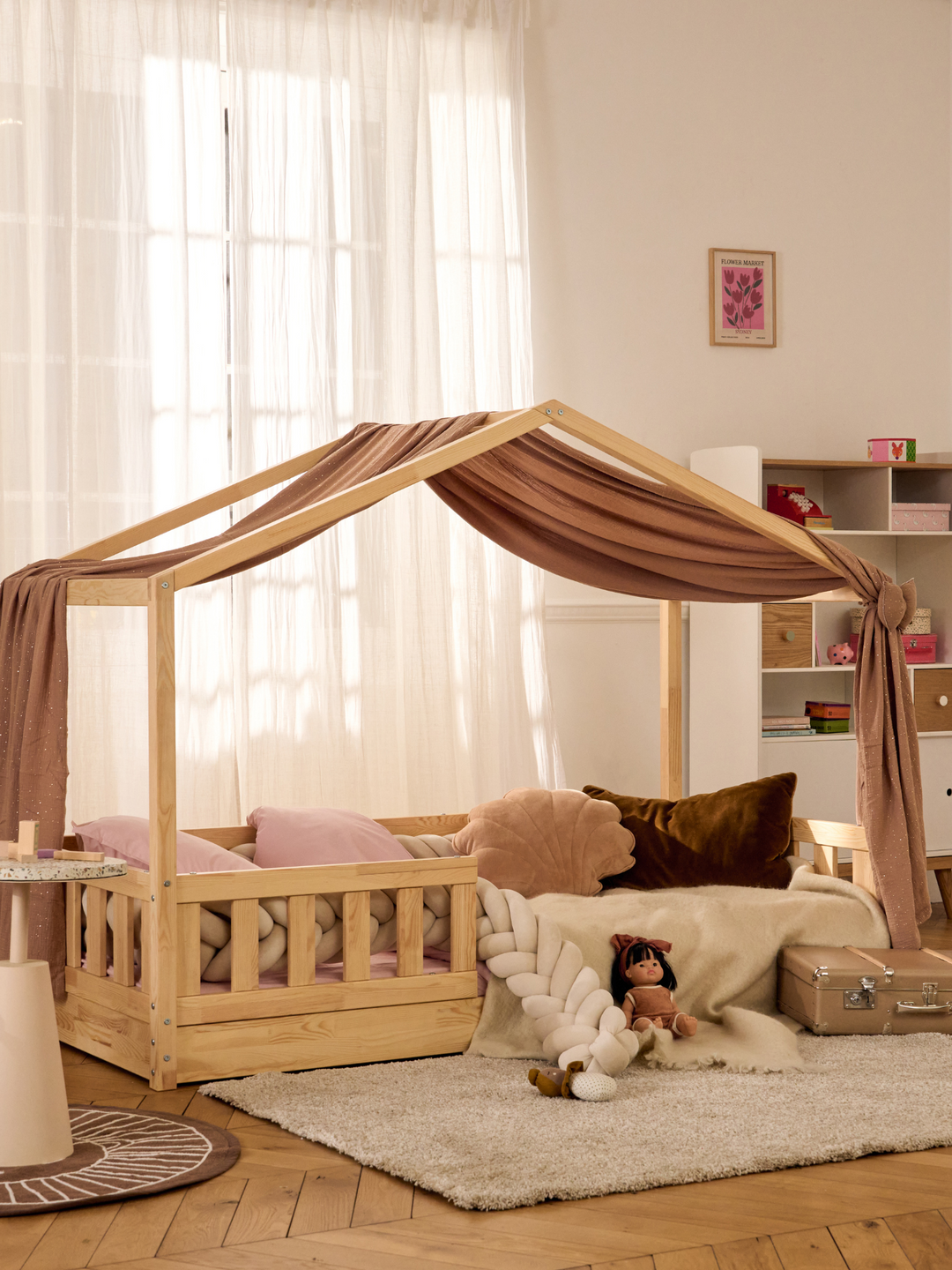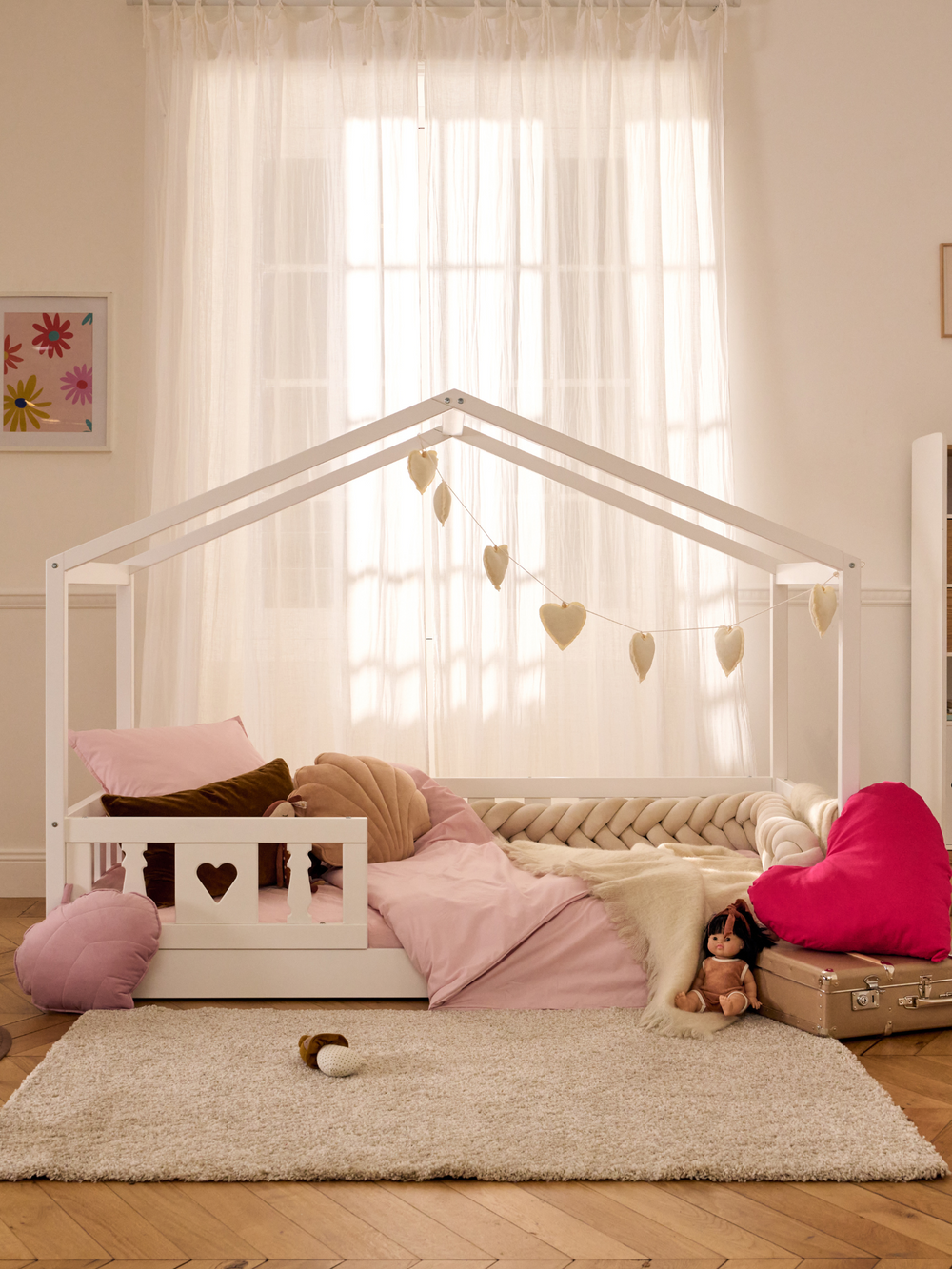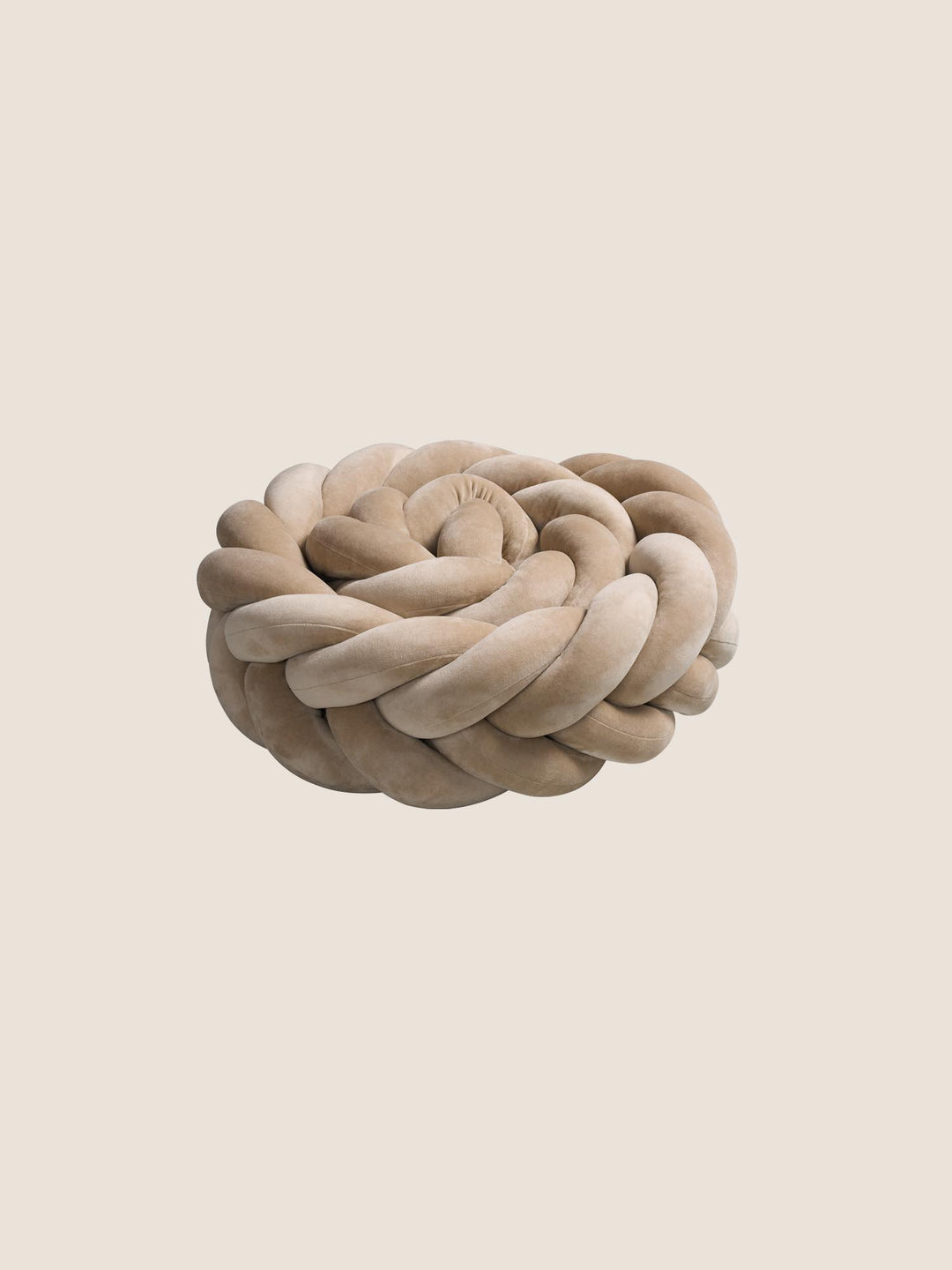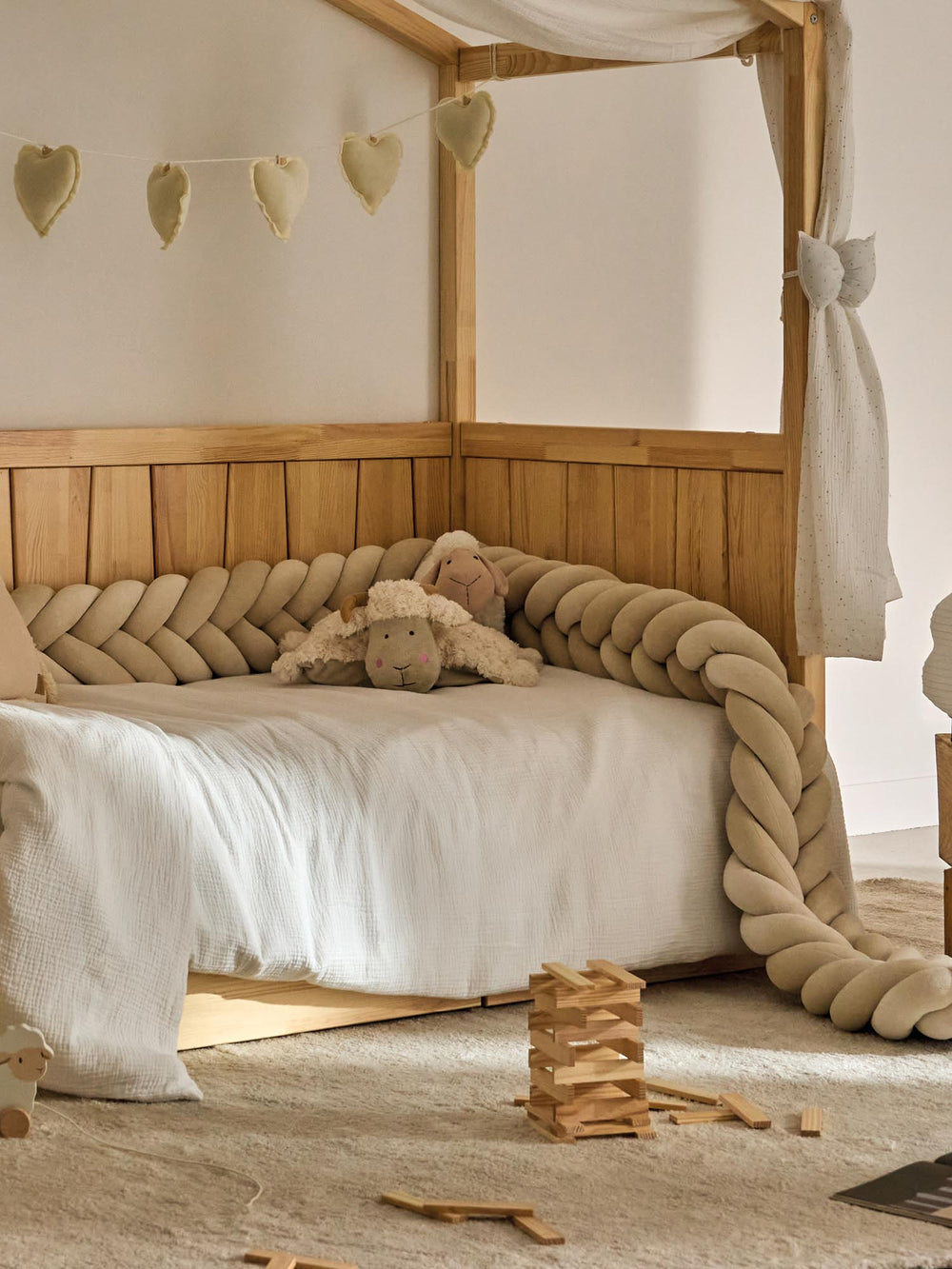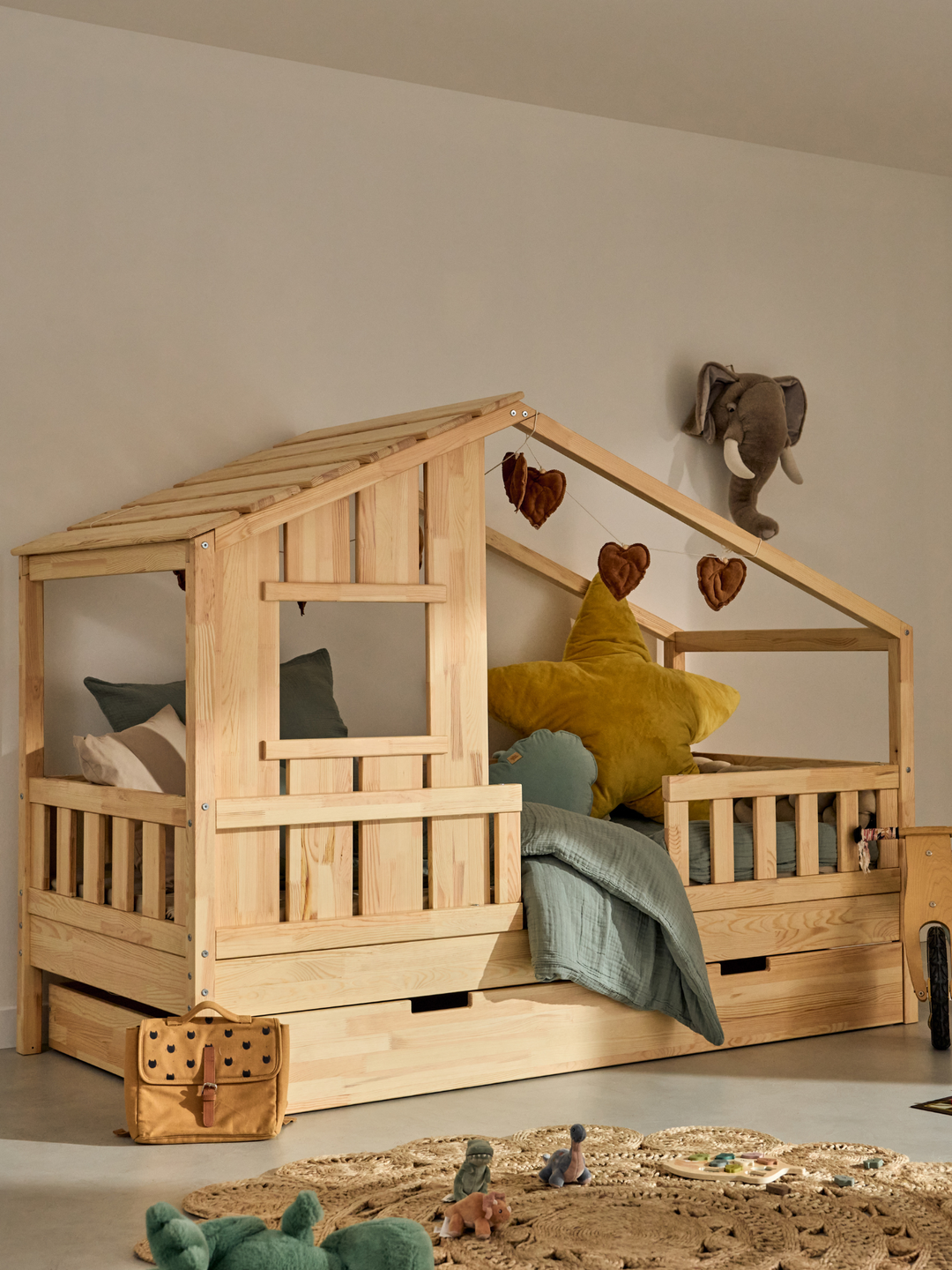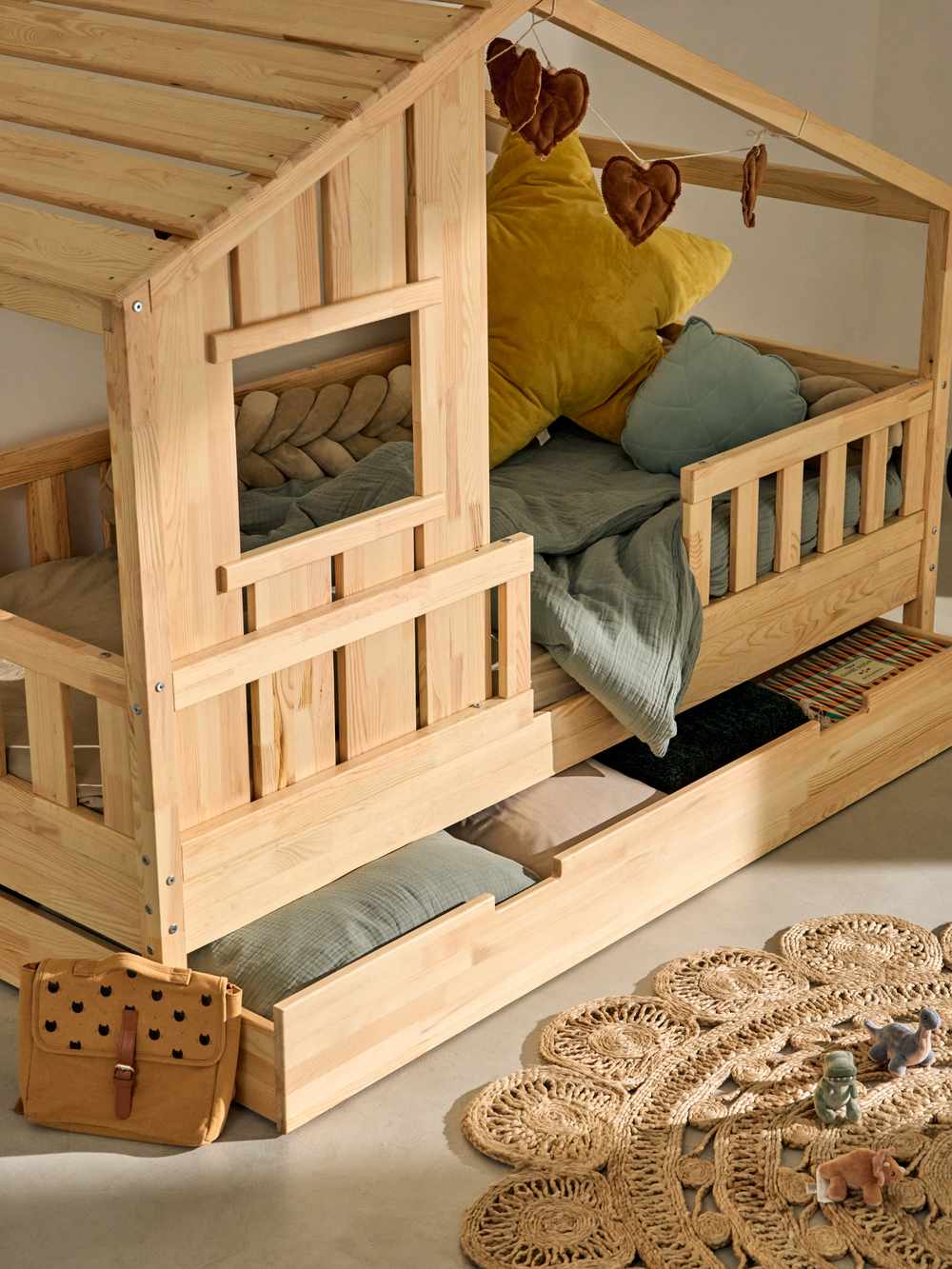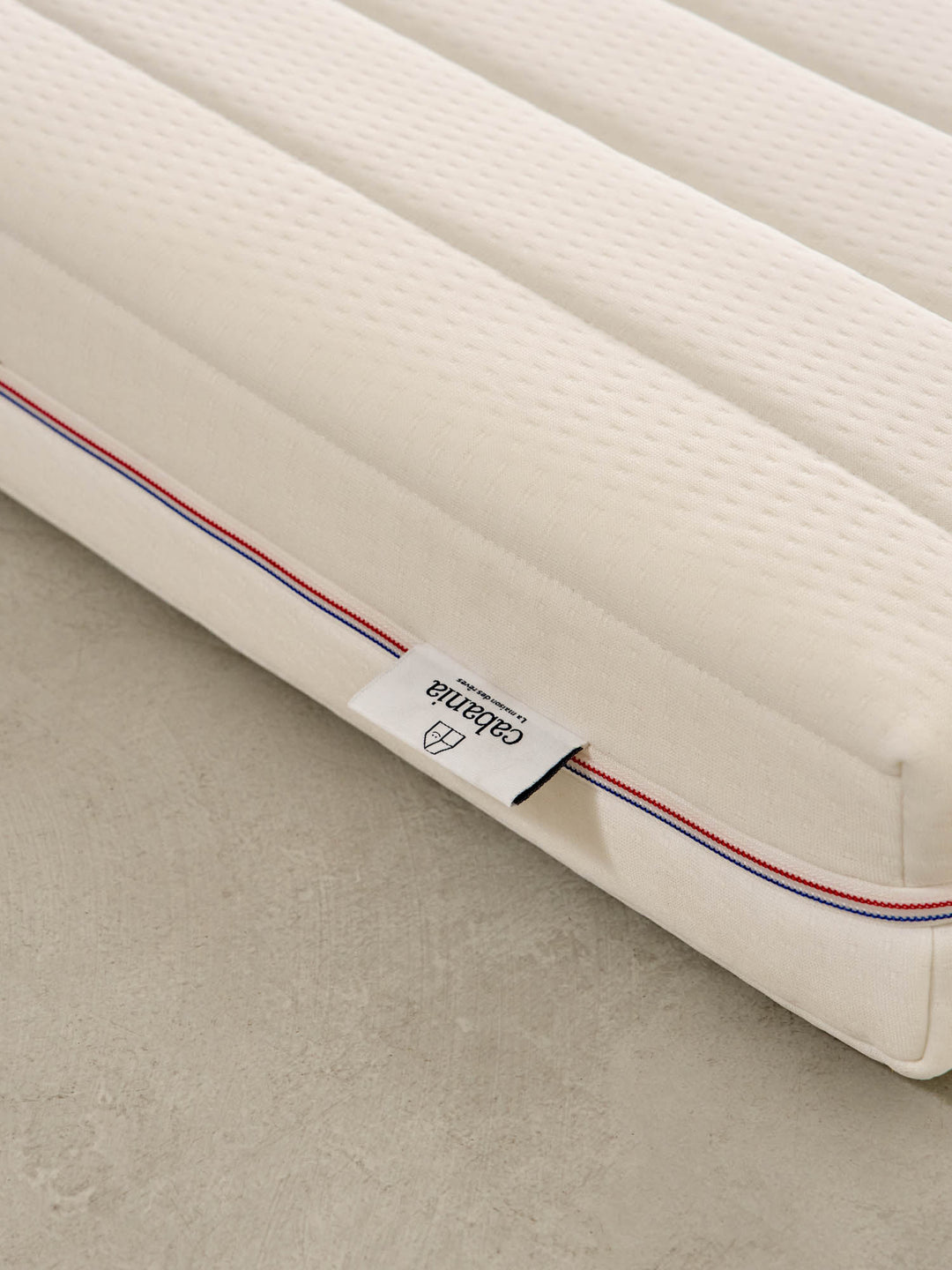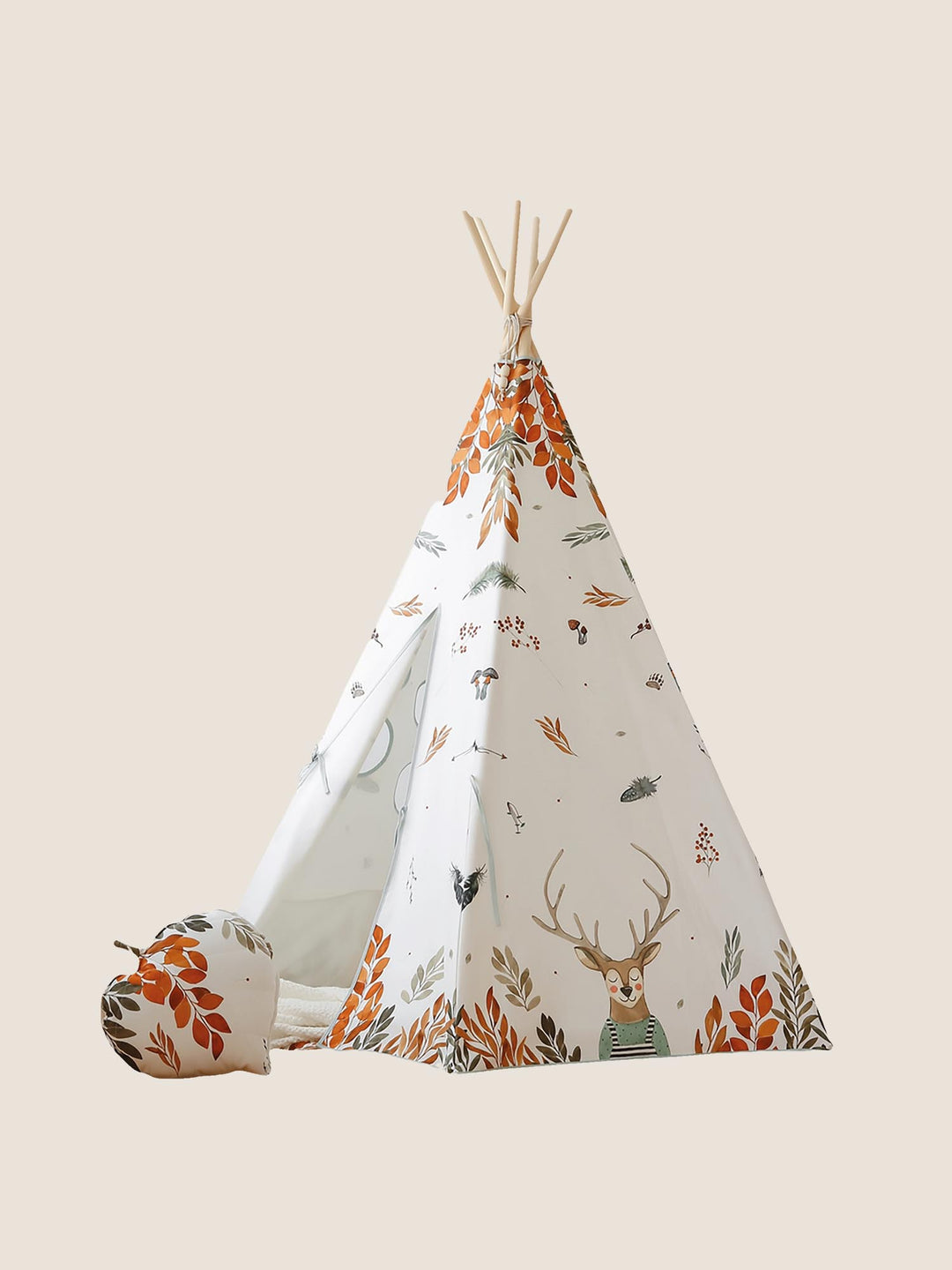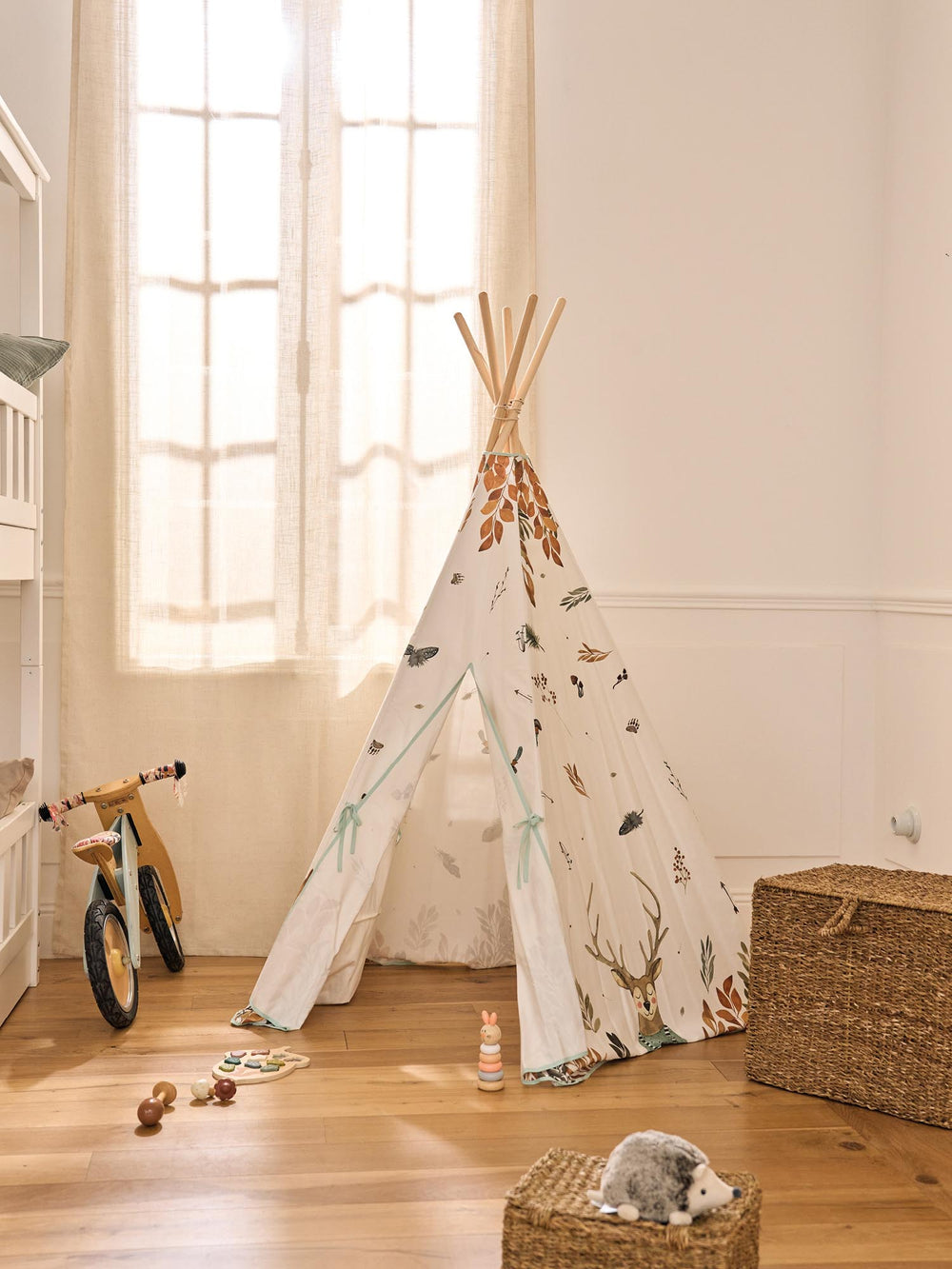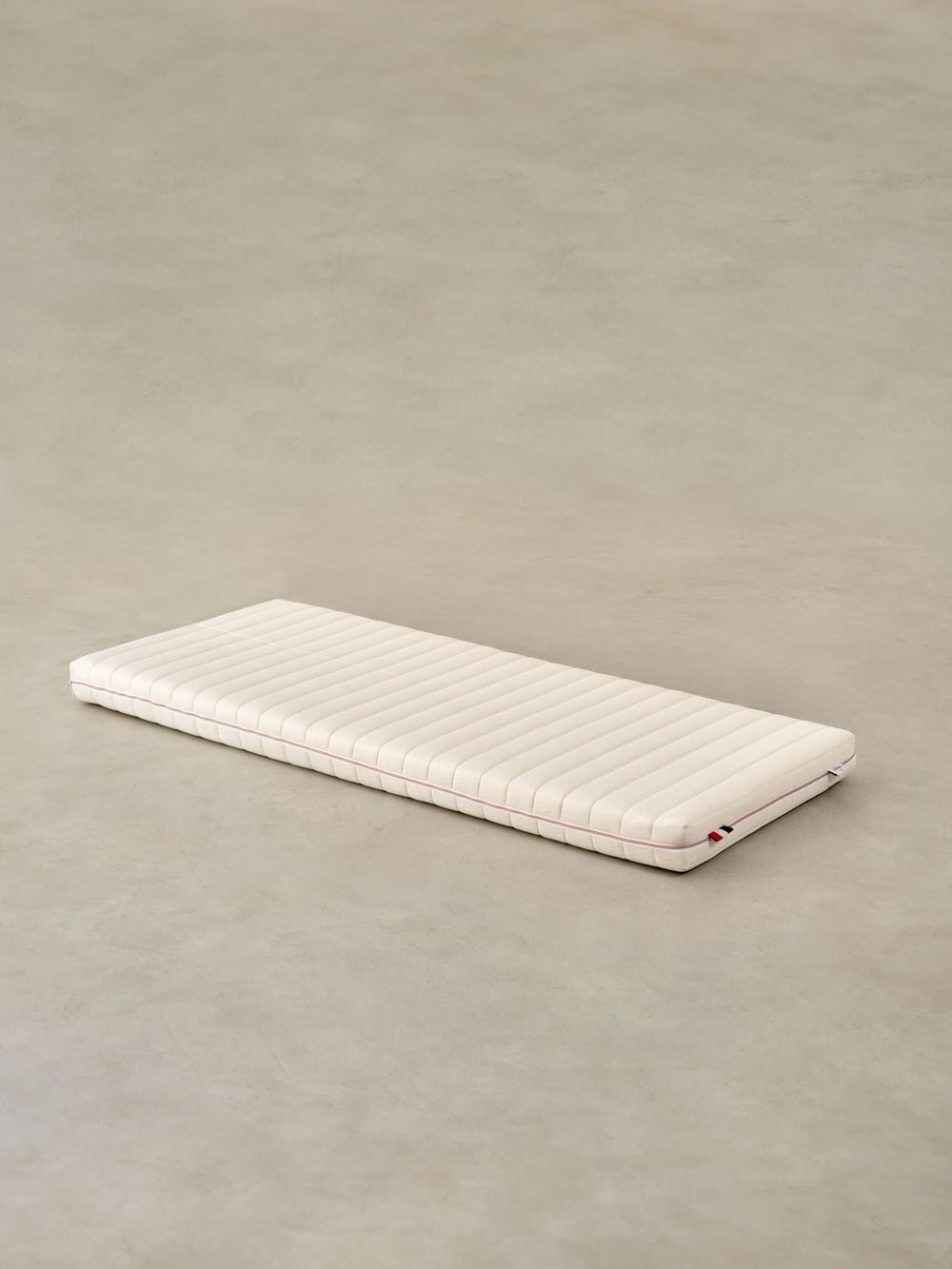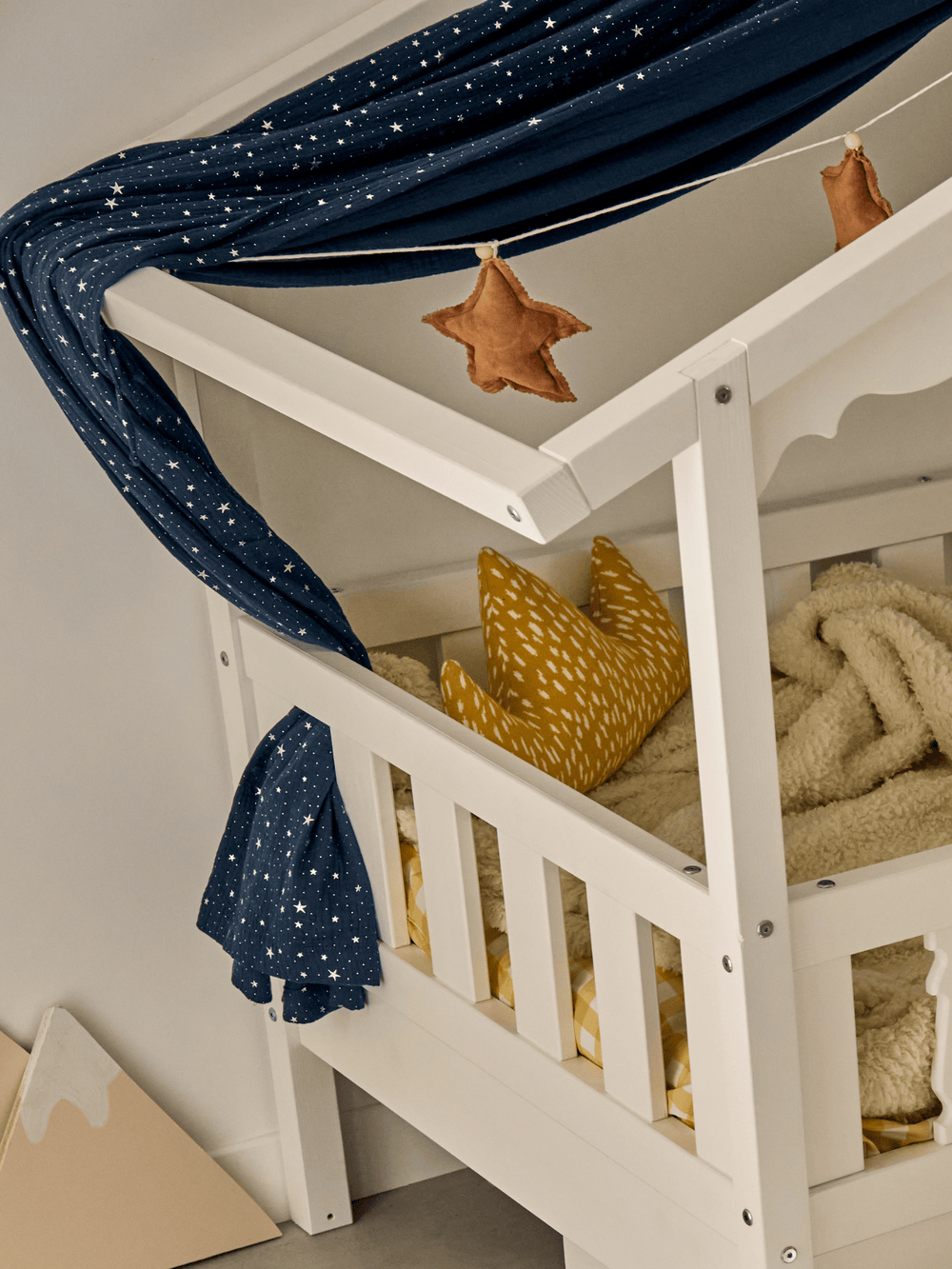10 idées Montessori pour une chambre d'enfant
Transformer la chambre de votre enfant en un espace d'éveil et de liberté est à portée de main grâce à la méthode Montessori. Découvrez 10 astuces incontournables pour créer un environnement où votre petit explorateur grandira en toute autonomie. Laissez-vous surprendre par la simplicité et l'ingéniosité de ces aménagements avec Cabania !
Principes fondamentaux de la méthode Montessori appliqués à la chambre d'enfant
La méthode Montessori repose sur quelques principes essentiels qui guident l’aménagement de la chambre d’enfant. Ces principes visent à créer un environnement propice au développement autonome et harmonieux de l’enfant, en respectant ses besoins naturels et son rythme personnel.

Accessibilité et autonomie
L’un des piliers fondamentaux de la méthode Montessori est l’accessibilité. Chaque élément de la chambre doit être à portée de main pour l’enfant, afin qu’il puisse interagir librement avec son environnement. Par exemple, un lit au sol, souvent appelé lit Montessori, permet à l’enfant d’y entrer ou d’en sortir sans aide, renforçant ainsi son indépendance dès le plus jeune âge.
Simplicité et ordre
Une chambre Montessori se caractérise par sa simplicité et son organisation méthodique. L’idée est de minimiser les distractions visuelles pour que l'enfant puisse se concentrer sur ses activités. Des étagères ouvertes ou des paniers accessibles facilitent le rangement des jouets et des livres, encourageant ainsi l’autonomie dans le quotidien.
Matériaux naturels et ambiance sereine
L’utilisation de matériaux naturels comme le bois contribue à créer une atmosphère apaisante dans la chambre. Les couleurs douces telles que les tons pastel ou neutres favorisent une ambiance calme qui soutient le repos et le bien-être émotionnel de l’enfant. Cette approche respecte non seulement les principes esthétiques mais aussi sensoriels prônés par Maria Montessori.
Espaces dédiés au mouvement et à la créativité
L’aménagement doit également inclure des espaces où l'enfant peut bouger librement. Un tapis moelleux pour jouer ou danser stimule sa motricité tandis qu’un coin créatif avec du matériel artistique offre une voie d’expression personnelle précieuse.
Voici des éléments à intégrer pour renforcer ces espaces :
- Miroir à hauteur d'enfant : un miroir fixé bas permet aux tout-petits de s’observer, renforçant leur conscience corporelle.
- Sécurité : assurez-vous que chaque élément soit sécurisé : prises protégées, meubles fixés au mur, matériaux non toxiques.
En intégrant ces principes dans la chambre de votre enfant, vous offrez un cadre sécurisant qui favorise son épanouissement personnel tout en respectant les valeurs éducatives montessoriennes.
10 idées concrètes pour aménager une chambre Montessori
Aménager une chambre selon les principes Montessori permet de créer un espace où l'enfant peut évoluer en toute autonomie et à son propre rythme. Voici dix idées concrètes pour transformer la chambre de votre enfant en un havre de développement personnel :
1. Opter pour un lit au sol
Le lit au sol est central dans une chambre Montessori. Il permet à l'enfant d'accéder à son espace de repos sans aide, favorisant ainsi son indépendance. Un lit cabane, proche du sol, peut également apporter une dimension ludique tout en respectant ce principe.
2. Créer des espaces de rangement accessibles
L'autonomie passe par le rangement. Installez des étagères ouvertes ou des paniers à hauteur d'enfant pour qu'il puisse ranger et accéder facilement à ses jouets et livres.
3. Sélectionner un mobilier épuré
Choisissez des meubles aux lignes simples et fabriqués avec des matériaux durables comme le bois. Cela contribue à créer un environnement harmonieux et serein.
4. Décorer avec des couleurs naturelles
Privilégiez les teintes douces telles que le beige ou le pastel qui instaurent une ambiance calme, propice au repos et à la concentration.
5. Intégrer un espace de mouvement
Laisser suffisamment d'espace pour que l'enfant puisse bouger librement est essentiel pour développer sa motricité. Un tapis confortable peut être idéal pour ramper, danser ou jouer.
6. Installer un miroir à hauteur d’enfant
Un miroir fixé bas sur le mur aide l’enfant à prendre conscience de lui-même et encourage son développement personnel.
7. Introduire des éléments naturels
Agrémentez la chambre avec des plantes non toxiques, utilisez la lumière naturelle autant que possible et choisissez des objets en bois ou en tissu plutôt qu’en plastique.
8. Créer un coin créatif
Mettez en place un petit bureau dédié aux activités artistiques, équipé de crayons, papiers et autres matériaux qui stimulent la créativité de votre enfant.
9. Veiller à la sécurité de l’espace
Pour garantir la sécurité, voici quelques précautions à prendre :
- Sécurisez les prises électriques ;
- Fixez les meubles au mur ;
- Prenez soin d'utiliser uniquement des matériaux non toxiques.
10. Impliquer l’enfant dans l’aménagement
Laissez votre enfant participer au choix de certains éléments décoratifs ou décider où ranger ses affaires afin qu’il se sente responsable et impliqué dans son environnement.
Mise en œuvre avec soin, chaque idée contribue non seulement à rendre la chambre fonctionnelle mais aussi épanouissante, respectant ainsi les valeurs fondamentales prônées par Maria Montessori.
